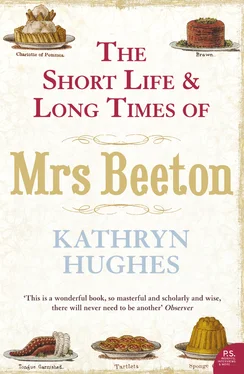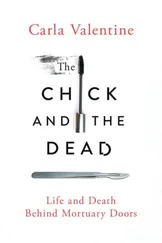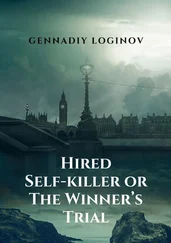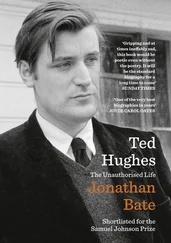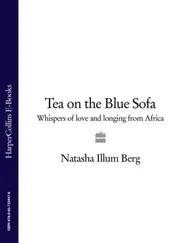Beeton’s utterly misguided choice fell upon a young female writer called Nancy Spain. Spain was to become famous in the 1950s as one of Britain’s first media personalities, writing punchy opinion pieces for middle-brow papers, appearing on the Home Service’s My Word and hamming it up on the TV quiz show What’s My Line? where she sat alongside Lady Isobel Barnet and Gilbert Harding. Spain, a flamboyantly butch lesbian in an era that did not care to enquire too deeply into such matters, became an instantly recognizable crop-haired, trouser-wearing figure in middle Britain’s landscape, until at the age of 46 she died in a plane crash on the way to the Grand National with her female lover. All this was in the future, though, when, in 1945, Mayson Beeton asked the recently discharged WRNS officer down to High Lands. Spain had already had some success with her first book, a chatty recollection of her wartime navy service called Thank You Nelson . More significantly, as far as Beeton was concerned, she had a blood connection with the family, although this time on his mother’s side. Spain’s grandmother, the recently deceased Lucy Smiles, had been one of Isabella Beeton’s favourite half-sisters.
Given that one of the driving forces of Mayson Beeton’s biographical ambitions had been to rescue his father’s reputation from the slow drip of innuendo that had originated from his mother’s family over the previous eighty years, it does seem odd that he should have blithely handed over the project to a Dorling descendant at this late stage. Even Spain was surprised, declaring later in her autobiography, ‘to this day I don’t know why he had picked me out of all the world.’ Perhaps a certain amount of contact between the Dorlings and the Beetons since the end of the Great War had made him believe that the rift was finally healed. Maybe Lucy Smiles’ gently anodyne contributions to The Times and the Star in 1932 recalling her lovely elder half-sister and dynamic brother-in-law reassured him that this particular vertical line of his mother’s family was benign to the Beetons. Perhaps Spain, at 28, seemed so young to the old man that it was impossible to believe that she would want to carry on a feud that had started nearly a century previously. Her mother had been at Roedean with Mayson Beeton’s daughters and she herself had followed them there. Give or take her penchant for flannel trousers, she looked and sounded like one of the family. So Spain was duly invited to ‘run down’ to High Lands, and work her way through Mayson Beeton’s collection of his parents’ love letters, Isabella’s diaries, and other ephemera which were now bulked out by all the articles that had appeared on Mrs Beeton over the previous ten years.
What Beeton had missed entirely was that the wildly ambitious Spain was looking to make a splash. And since she was also an incorrigible spendthrift, she needed to make money too (not for nothing was her 1956 autobiography titled Why I’m Not A Millionaire ). Spain was far less of a scholar than Hyde, and her writing on Mrs Beeton is spattered with factual errors. An early essay which she wrote for the Saturday Book in 1945 in order to raise some much needed cash manages to get not only Isabella’s death date wrong, but also the birth of her last child, and these kinds of basic errors went uncorrected into the book. Yet if Spain was sloppy over detail, she had a sharp nose for where the real drama of the Beeton story lay. Armed with a rich store of information from her late grandmother and a sole surviving great-aunt, she set about writing an account that managed to suggest, without exactly saying so, that Mrs Beeton’s home life was not quite the model of well-regulated domesticity that the nation fondly imagined.
In the circumstances it was probably lucky that Sir Mayson died before Spain’s book appeared. The reaction of his three daughters to their second cousin’s effort goes unrecorded, although Spain hints in her autobiography that getting their approval on her manuscript was a lengthy and wearisome business. Having grudgingly approved Spain’s effort, the Beeton girls lost no time in putting pressure on Harford Montgomery Hyde, now finally free of wartime duties, to revive the biography on which he had been working with their father in the 1930s. Four years later, Mr and Mrs Beeton duly appeared, bearing all the signs of being the book that Mayson Beeton would have wished to write, had he not run out of time. As if to emphasize that this really was the ‘authorized’ version of the Beeton story, Hyde included the Preface that Sir Mayson had originally written for the book back in 1936 (in fact a fuller version of his Daily Mail piece) and also appended a biographical essay sketching out Sir Mayson’s distinguished career. Whatever ‘Montgomery the Mole’ had managed to find out, he was sufficiently loyal to his kinsman’s memory not to reveal it.
And there the story might have ended, with two competing versions of the Beeton story, one originating from either side of the family, glaring at each other down the remaining decades of the twentieth century. On Mayson Beeton’s death in 1947 the archive of letters and ephemera that had formed the nucleus of both biographies was left to his only grandchild Rodney Levick on condition that the young man incorporate the Beeton family name into his. Levick, an eccentric man, lived in Budleigh Salterton for the next fifty years on his grandfather’s capital, writing periodically to the national newspapers to announce that he had devised a method of long-range weather forecasting far in advance of anything the Met Office could manage. He also took to riding his tricycle around Britain, dropping in unannounced on distant cousins from both the Beeton and Dorling sides and staying far too long. On returning to the home that he shared with his widowed mother Audrey Levick and a tribe of stuffed penguins (his father had been the surgeon on Scott’s final Antarctic trek), Levick would despatch tapes of classical music to his relieved hosts. Followed shortly, much to their astonishment, by an invoice.
From the late 1940s to the mid 1970s very few people beat a path to Budleigh Salterton to talk to the Levicks about Mrs Beeton or try to coax access to the archive. The Victorians were undergoing one of their periodic falls from favour. Increasing social and sexual post-war freedoms made them seem like the stuffy architects of everything that was now, finally, being swept away. The end of rationing had set the stage for Elizabeth David’s lyrical advocacy of the fresh, sharp flavours of sunshiny southern Europe. There was virtually no appetite for Mrs Beeton, a woman whose very name seemed synonymous with roast beef, over-cooked vegetables and foggy winter evenings.
But by the early 1970s nostalgia was back in fashion. Laura Ashley was reworking Victorianism in a pretty print frock, Upstairs Downstairs was on the television (and surely it was no coincidence that the cook was another Mrs B. – Mrs Bridges), and there was the beginning of a revival of interest in the vernacular tastes of Great Britain (there was only so much packet paella that anyone could be expected to eat). A clever young woman at Harpers & Queen magazine, who combined the job of arts editor with an interest in food and cooking, had noticed the shift in mood. Moreover, she was intrigued by the little-known fact that Queen magazine, which was one half of Harpers & Queen , had been founded by Samuel Beeton in 1861 and counted none other than Mrs Beeton as its first fashion editor. Searching around for a good subject for her first book, Sarah Freeman duly advertised in The Times in 1974 trawling for information about the Beeton archive.
Читать дальше
